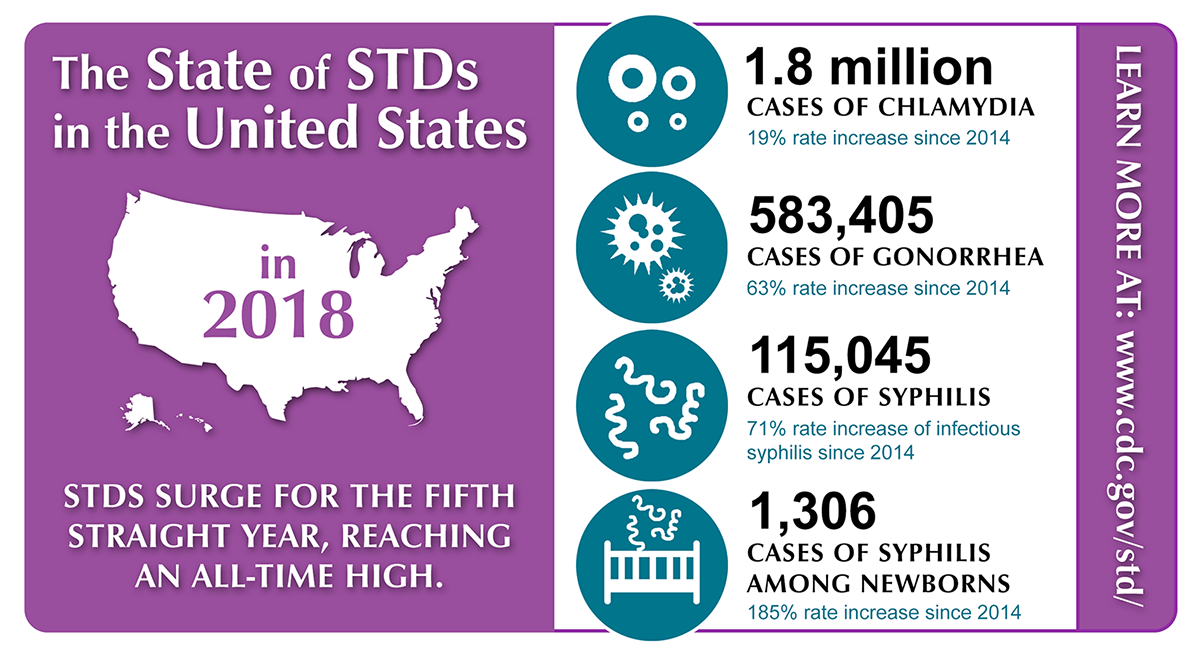Chlamydia, Gonorrhea, and Syphilis have increased from 2014 to 2018. In the past 4 years, the number of cases has drastically risen. Do you remember your high school heath teacher reading scary numbers of STD and STIs? Well, today they might be scarier. What should you do to protect yourself and the people intimate with you?
Condoms
Condoms and other protective contraception should be an always. Male or female condoms can be used to significantly reduce STDs. Condoms are not just for a penis to vagina sex, but also for oral, anal, and sex toys. Many people look past putting a condom on sex toys, but they can spread STDs just like the real thing. So make sure you wrap it like a scarf in winter.
Testing
A significant amount of people who have STDs don’t know. Testing is the solution. Everyone should be tested at least annually. Depending on the number of sexual partners, you may need to be tested more often. Getting the tests done can be expensive especially if you have crappy healthcare, or no healthcare. Some non-profits or local governments have clinics to get tested affordably or even for free.
Another affordable option is if you are planning on leaving the country. It could be for that spring break trip or for the bachelorette party. When you go check the healthcare system there. Healthcare tests and services could be 10% of the cost they are in the United States.
Communication
Communication the cheapest option, but the most difficult. You just went on a date with someone you think is really cute. You crushed the date now you’re heading back to your place. The lights dim. The new series on Netflix is playing in the background that you both pretended to watch. You start making out. Oh, by the way, do you have gonorrhea? Yeah something just doesn’t fit.
Talk. Talk. Talk. Let’s rewind the night. You really should have talked about what you wanted to do before you went back to your place. The conversation could have started with something like what are we doing after dinner? You could talk about your sexual kinks, fantasies, and triggers. At that point you would say: “I follow the clover up club pledge and I always use a condom.” Ok, you don’t need to say that, but you should talk about condoms usage. At that point it’s great to tell your partner when you were last tested. Then ask when they were. You might want to also ask how many sexual partners they have had since last being tested. You don’t need details of who and what they did just the number and if they used a condom. Sharing this information will give you a good sense of risk for you and your partner. Then you go to your place and put on Stranger Things while doing stranger things.
This should not be treated as medical advice. The content serves for the purpose of education. The following suggestions above do not guarantee you a 100% STD risk.
